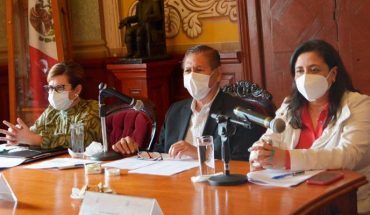Since the temporary transfer of 10 mobile particulate material sensors developed by the University of Cambridge, volunteer students from the National Technological University (UTN) will perform measurement circuits using bicycles and recording air quality levels as they circulate through the city streets. This data will be incorporated into a map of the city and will allow to obtain an image of the pollution. The data will in turn be dumped to the global air quality network. The project envisages that, during September and October, 10 teams will be delivered to volunteer students of UTN Mendoza and travel with their bicycles various areas of Gran Mendoza, to achieve good geographical coverage. During the launch of the project, Juan Trebino, Under-Secretary for Control and Recomposition, said: “In the framework of Sustainable Mobility Week and continuing with the Open Seneca project, we worked together with UTN and the Secretariat of Environment of Mendoza . We believe that in these spaces we can link citizen participation, academia and youth, while fostering environmental awareness and clean and sustainable mobility.” Trebino added that “Secretary (Sergio) Bergman aims to generate policies in which environmental education is critical. By meeting the Sustainable Development Goals and understanding that our natural resources are not infinite, we can leave future generations a better planet. In this sense, air quality measurement data are essential for decision-making and public policy design, but they are also fundamental to raising awareness of our choices as citizens.” For his part, Humberto Mingorance, Secretary of Environment and Territorial Planning of Mendoza, said: “This virtuous circle of actors involved (international, national and provincial) is useful, as it will increase the mass of information on which then we can make public policy decisions.” This study of pollution of the city of Mendoza is complemented by measurements of the UTN Atmospheric and Environmental Studies Group (GEAA) and the application of dispersion models. Faced with a shortage of permanent environmental monitoring equipment, these economic sensors provide the opportunity to obtain adequate spatial sensing that, combined with local models, will enable a good quality of environmental information from Mendoza.La Director of Environmental Protection of our Province, Miriam Skalany, stressed the importance that these air quality data will have, which will be added to those who have been relieved from the fixed and mobile weather stations of our province: “The air quality measurements obtained will allow us to increase the quantity and quality of data that we currently have in order to analyze, process and make them available on the Open Data portal of our province”. Open Seneca is a project that aims to create a global network of air quality sensors with the help of citizens to measure their exposure to air pollution and thus raise awareness about exposure to pollution levels and produce a change of c collaborating and reporting on air quality management policies. José Balacco, dean at the Mendoza Regional Faculty of the UTN, also participated in the activity; Miriam Skalany, Director of Environmental Protection of Mendoza; Roberto Puliafito, director of the Atmospheric and Environmental Studies Group (GEAA) of the UTN, and Norberto Vila and Leonardo Di Paolo, of the Subsecretariat for The Control and Recomposition of the Nation.In this note:
air quality
mendoza
Measurement
Utn
Environment Secretariat
translated from Spanish: Mendoza will make air quality measurements
September 19, 2019 |





